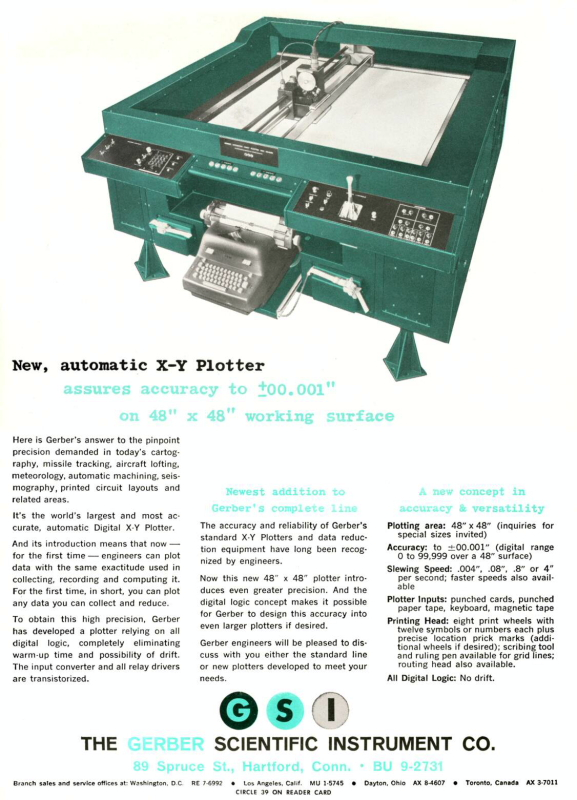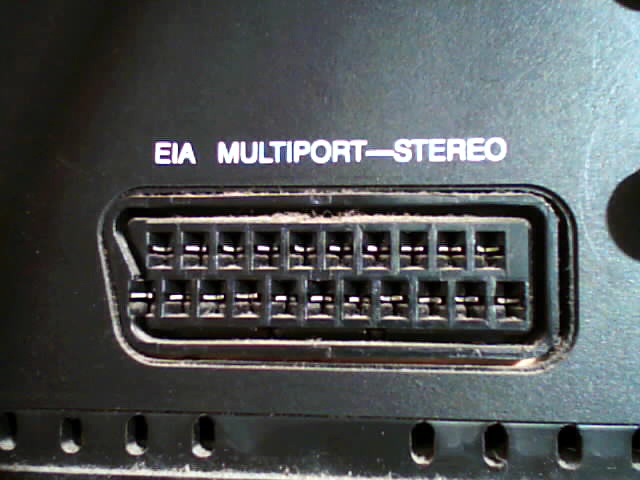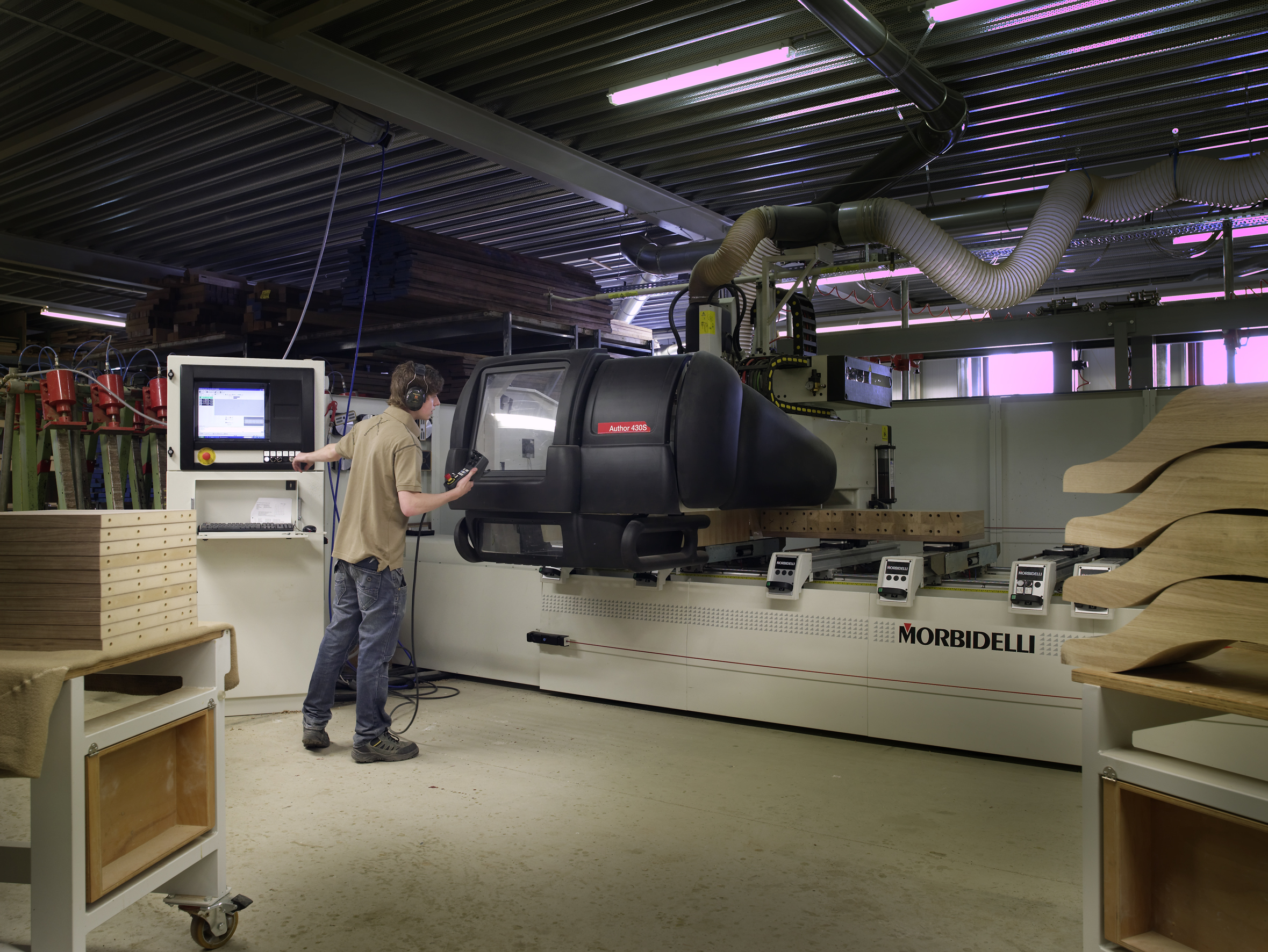|
Gerber Format
The Gerber format is an open, ASCII, vector format for printed circuit board (PCB) designs. It is the ''de facto'' standard used by PCB industry software to describe the printed circuit board images: copper layers, solder mask, legend, drill data, etc. The standard file extension is .GBR or .gbr though other extensions like .GB, .geb or .gerber are also used. It is documented by The Gerber Layer Format Specification and some related (but less universally supported) extensions such as XNC drill files and GerberJob to convey information about the entire PCB, as opposed to single layers. Gerber is used in PCB fabrication data. PCBs are designed on a specialized electronic design automation (EDA) or a computer-aided design (CAD) system. The CAD systems output PCB fabrication data to allow fabrication of the board. This data typically contains a Gerber file for each image layer (copper layers, solder mask, legend or silk...). Gerber is also the standard image input format for all ... [...More Info...] [...Related Items...] OR: [Wikipedia] [Google] [Baidu] |
PCB NC Formats
PCB NC drill files convey PCB drilling and routing information. The NC formats were originally designed by CNC drill and route machine vendors as proprietary input formats for their equipment, and are known under their company name: Excellon, Hitachi, Sieb & Meyer, Posalux, etc. These formats are similar as they are based on RS-274-C and related to G-code. In 1985 IPC published a generic standard NC format, IPC-NC-349. Later XNC was designed, a simple strict subset of IPC-NC-349, designed not for driving machines but for exchanging drill information between CAD and CAM. They are collectively referred to as (PCB) NC files. The NC files are primarily used to drive CNC machines, and they are adequate for that task. They are also used to exchange design information between CAD and CAM, for which they are ''not'' adequate: essential information such as plating and drill span is missing. Furthermore, the NC output in CAD systems is often poorly implemented, resulting in poor registrat ... [...More Info...] [...Related Items...] OR: [Wikipedia] [Google] [Baidu] |
International Electrotechnical Commission
The International Electrotechnical Commission (IEC; ) is an international standards organization that prepares and publishes international standards for all electrical, electronics, electronic and related technologies. IEC standards cover a vast range of technologies from power generation, transmission and distribution to home appliances and office equipment, semiconductors, fibre optics, batteries, solar energy, nanotechnology, and marine energy, as well as many others. The IEC also manages four global conformity assessment systems that certify whether equipment, system or components conform to its international standards. All electrotechnologies are covered by IEC Standards, including energy production and distribution, electronics, magnetics and electromagnetics, electroacoustics, multimedia, telecommunications and medical technology, as well as associated general disciplines such as terminology and symbols, electromagnetic compatibility, measurement and performance, dependa ... [...More Info...] [...Related Items...] OR: [Wikipedia] [Google] [Baidu] |
IPC (electronics)
IPC is a global trade association whose aim is to standardize the assembly and production requirements of Electronics, electronic equipment and assemblies. IPC is headquartered in Bannockburn, Illinois, United States with additional offices in Washington, D.C. Atlanta, Ga., and Miami, Fla. in the United States, and overseas offices in China, Japan, Thailand, India, Germany, and Belgium. IPC is accredited by the American National Standards Institute (ANSI) as a Standards organization#Standards Developing Organizations .28SDOs.29, standards developing organization and is known globally for its standards. It publishes the most widely used acceptability standards in the electronics industry. History It was founded in 1957 as the Institute of Printed Circuits. Its name was later changed to the Institute for Interconnecting and Packaging Electronic Circuits to highlight the expansion from bare boards to packaging and electronic assemblies. In 1999, the organization formally changed i ... [...More Info...] [...Related Items...] OR: [Wikipedia] [Google] [Baidu] |
Barco (manufacturer)
Barco NV is a Belgian technology company that specializes in digital projection and imaging technology, focusing on three core markets: entertainment, enterprise, and healthcare. It employs employees located in 90 countries. The company has 400 granted patents. Barco is headquartered in Kortrijk, Belgium, and has its own facilities for Sales & Marketing, Customer Support, R&D and Manufacturing in Europe, North America and Asia-Pacific. Shares of Barco are listed on Euronext Brussels. It has a market cap of around €900 million (December 2024). Barco sells its ClickShare products to enable wireless projection from sender devices to receiver displays. History Barco is an acronym that originally stood for Belgian American Radio Corporation. Barco was founded in 1934 in the town of Poperinge, in the Flemish-speaking region of Belgium. Founder Lucien de Puydt's initial business was to assemble radios from parts imported from the United States – hence the name of his company ... [...More Info...] [...Related Items...] OR: [Wikipedia] [Google] [Baidu] |
Joseph Gerber
Heinz Joseph Gerber (17 April 1924 – 8 August 1996) was an American inventor and businessman. An Austrian-born Jewish Holocaust survivor who immigrated in 1940, he pioneered computer-automated manufacturing systems for an array of industries. Described as the "Thomas Edison of manufacturing", he was one of the first to recognize and develop the productivity-enhancing potential for computer automation in skill-intensive industrial sectors. His work in this field grew from his early developments of graphical-numerical computing devices, data-reduction tools, and plotters. He was awarded America's National Medal of Technology, the country's highest recognition in technology and innovation, in 1994, for his "technical leadership in the invention, development and commercialization of manufacturing automation systems for a wide variety of industries." These industries ranged from automotive, aerospace, shipbuilding, clothing, and consumer electronics, to printing, sign making, cobbl ... [...More Info...] [...Related Items...] OR: [Wikipedia] [Google] [Baidu] |
RS-274-D
G-code (abbreviation for geometric code; also called RS-274, standardized today in ISO 6983-1) is the most widely used computer numerical control (CNC) and 3D printing programming language. It is used mainly in computer-aided manufacturing to control automated machine tools, as well as for 3D-printer slicer applications. G-code has many variants. G-code instructions are provided to a machine controller (industrial computer) that tells the motors where to move, how fast to move, and what path to follow. The two most common situations are that, within a machine tool such as a lathe or mill, a cutting tool is moved according to these instructions through a toolpath cutting away material to leave only the finished workpiece and/or an unfinished workpiece is precisely positioned in any of up to nine axes around the three dimensions relative to a toolpath and, either or both can move relative to each other. The same concept also extends to noncutting tools such as forming or b ... [...More Info...] [...Related Items...] OR: [Wikipedia] [Google] [Baidu] |
Electronic Industries Association
The Electronic Industries Alliance (EIA; until 1997 Electronic Industries Association) was an American standards and trade organization composed as an alliance of trade associations for electronics manufacturers in the United States. They developed standards to ensure the equipment of different manufacturers was compatible and interchangeable. The EIA ceased operations on February 11, 2011, but the former sectors continue to serve the constituencies of EIA. History In 1924, 50 radio manufacturers in Chicago formed a trade group called the ''Associated Radio Manufacturers''. This organization was designed to control the licensing of the large number of radio patents so that each member could have access to all the relevant patents necessary to build radio transmitters, antennas and receivers. Over time, new electronic technologies brought new members, non-manufacturer members, and name changes. Names in chronological order: * 1924 – ''Associated Radio Manufacturers'' ... [...More Info...] [...Related Items...] OR: [Wikipedia] [Google] [Baidu] |
Numerical Control
Computer numerical control (CNC) or CNC machining is the automated control of machine tools by a computer. It is an evolution of numerical control (NC), where machine tools are directly managed by data storage media such as punched cards or punched tape. Because CNC allows for easier programming, modification, and real-time adjustments, it has gradually replaced NC as computing costs declined. A CNC machine is a motorized maneuverable tool and often a motorized maneuverable platform, which are both controlled by a computer, according to specific input instructions. Instructions are delivered to a CNC machine in the form of a sequential program of machine control instructions such as G-code and M-code, and then executed. The program can be written by a person or, far more often, generated by graphical computer-aided design (CAD) or computer-aided manufacturing (CAM) software. In the case of 3D printers, the part to be printed is "sliced" before the instructions (or the prog ... [...More Info...] [...Related Items...] OR: [Wikipedia] [Google] [Baidu] |
Deprecation
Deprecation is the discouragement of use of something human-made, such as a term, feature, design, or practice. Typically something is deprecated because it is claimed to be inferior compared to other options available. Something may be deprecated when it cannot be controlled, such as a term. Even when it can be controlled, something may be deprecated even when it might be useful for example, to ensure compatibility and it may be removed or discontinued at some time after being deprecated. Etymology In general English usage, the verb "to deprecate" means "to express disapproval of (something)". It derives from the Latin deponent verb ''deprecari'', meaning "to ward off (a disaster) by prayer". An early documented usage of "deprecate" in this sense is in Usenet posts in 1984, referring to obsolete features in 4.2BSD and the C programming language. An expanded definition of "deprecate" was cited in the Jargon File in its 1991 revision, and similar definitions are found in ... [...More Info...] [...Related Items...] OR: [Wikipedia] [Google] [Baidu] |
Metadata
Metadata (or metainformation) is "data that provides information about other data", but not the content of the data itself, such as the text of a message or the image itself. There are many distinct types of metadata, including: * Descriptive metadata – the descriptive information about a resource. It is used for discovery and identification. It includes elements such as title, abstract, author, and keywords. * Structural metadata – metadata about containers of data and indicates how compound objects are put together, for example, how pages are ordered to form chapters. It describes the types, versions, relationships, and other characteristics of digital materials. * Administrative metadata – the information to help manage a resource, like resource type, and permissions, and when and how it was created. * Reference metadata – the information about the contents and quality of Statistical data type, statistical data. * Statistical metadata – also called process data, may ... [...More Info...] [...Related Items...] OR: [Wikipedia] [Google] [Baidu] |





